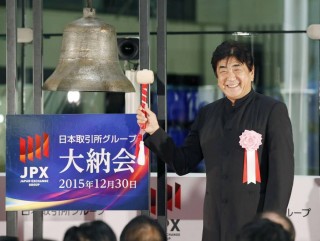Search
▼ Economy Tipped For Gradual Recovery In 2016 Following Year of Sluggish Growth
- Category:Other

JAPAN TIMES
Japan’s economy fell short of expectations for a solid recovery in 2015, but it is likely to gain traction in fiscal 2016 on the support of corporate investment and private consumption, economists say.
“I think the economy will gradually recover in fiscal 2016,” said Koichi Haji, managing director of NLI Research Institute. “With inflation at low levels, I expect wages will rise to a degree in real terms and consumption will improve, leading to gradual growth.”
But the recovery may be unimpressive, lacking viable growth drivers.
Compared to the real 1.0 percent gross domestic product shrinkage in fiscal 2014, economists think growth was a real 0.9 percent in fiscal 2015, according to consensus figures released Dec. 7 by the Japan Center for Economic Research. The consensus forecast for fiscal 2016 is for 1.5 percent growth.
At least one positive factor seems certain in fiscal 2016: the additional 2 percentage point consumption tax hike planned in April 2017.
Economists agree that the tax rise is likely to briefly push up consumption toward the end of fiscal 2016 amid a last-minute buying rush before the hike, raising the growth rate for the full fiscal year.
But Yasunari Ueno, chief market economist at Mizuho Securities Co., said otherwise “nothing that can drive the economy.”
“My view is that recovery will be slow and instable at best,” he said.
He does not believe the economic policies incorporated in the record ¥96.7 trillion budget for fiscal 2016 and the ¥3.3 trillion supplementary budget for fiscal 2015, approved on Dec. 24 and Dec. 18, respectively, by the Cabinet, will change the negative prospects for the year.
“In my basic scenario, I don’t expect to see a significant slowdown at least by the Upper House election (in summer), but export, consumption and investment all lack power (to drive the economy), so while everybody talks about recovery, the upward move (of the economic growth) will be slow and instable.”
A key risk in fiscal 2016 is a potential reversal in the yen’s downward trajectory since 2012, which has supported the nation’s exports by making Japanese products cheaper abroad.
Aided by the Bank of Japan’s massive quantitative easing program, the yen has fallen far below theoretical long-term equilibrium levels, making it increasingly likely to strengthen, according to Ueno.
The recent rate hike in the United States, which Dai-ichi Life Research Institute Chief Economist Hideo Kumano said may discourage dollar buying amid expectations for slower U.S. growth, could result in upward pressure on the yen by leading investors to turn to other advanced nations’ currencies.
The U.S. rate hike “is undoubtedly negative” for the Japanese economy, the economist said. He added the hike may also lead investors to sell emerging market currencies, affecting growth in the emerging nations that have driven the global economy.
After the consumption tax was raised 2 percentage points to 8 percent in April 2014 in an effort to address snowballing social security costs amid the nation’s aging population, the Japanese economy slumped significantly for the rest of the year, with GDP shrinking over the full 2014 fiscal year.
The economy failed to improve as much as expected in the following year.
“The yen grew cheaper, but wages didn’t rise very much in 2015. In a nutshell, the economy didn’t grow as had been expected,” Haji said.
Kumano described the economy in 2015 as “crawling at the bottom, or in a very slumped state,” pointing to lackluster household spending, which declined year-on-year for the third consecutive month in November.
The year saw Prime Minister Shinzo Abe’s “three arrows” of his Abenomics economic policy — bold monetary policy, flexible fiscal policy and a growth strategy to encourage private-sector investment — losing steam as the economy slumped.
Abe responded in September by announcing a new set of policy targets, including a strong economy that inspires hope, child-rearing support to push up the low birthrate and improved social security measures to increase nursing facilities for the elderly.
But Kumano questioned whether it would lead the economy out of the doldrums.
“These are in the domain of social policy. They are aimed at enhancing day care facilities for children and improving services for the elderly,” Kumano said. “But you shouldn’t confuse these issues and issues of (how to spur) economic growth.”
He added, “We are familiar with the idea of bringing benefit to households, like cutting taxes, and the economy improving as a result, but it’s an illusion. It just sounds sweet. I guess they talk about it before elections to buy favor.
“When you get right down to brass tacks, improving employment, boosting wages and increasing capital investment are key. Boosting demand through the business sector is far more effective.”
One of the few positive themes in 2015 was an explosive increase of inbound foreign travelers, totaling some 18 million in the first 11 months of the year, with the government planning to boost this further ahead of the 2020 Tokyo Olympics.
Although welcoming its positive impact, especially on local industries and economies in destination areas, economists say inbound tourism is not big enough to become a driving engine of the economy.
Inbound tourists’ consumption, which is about ¥3 trillion annually, “is still a much smaller option compared to targeting increases in capital investment or wages,” Kumano said, adding the nation’s capital expenditure totals about ¥70 trillion.
- December 31, 2015
- Comment (0)
- Trackback(0)

